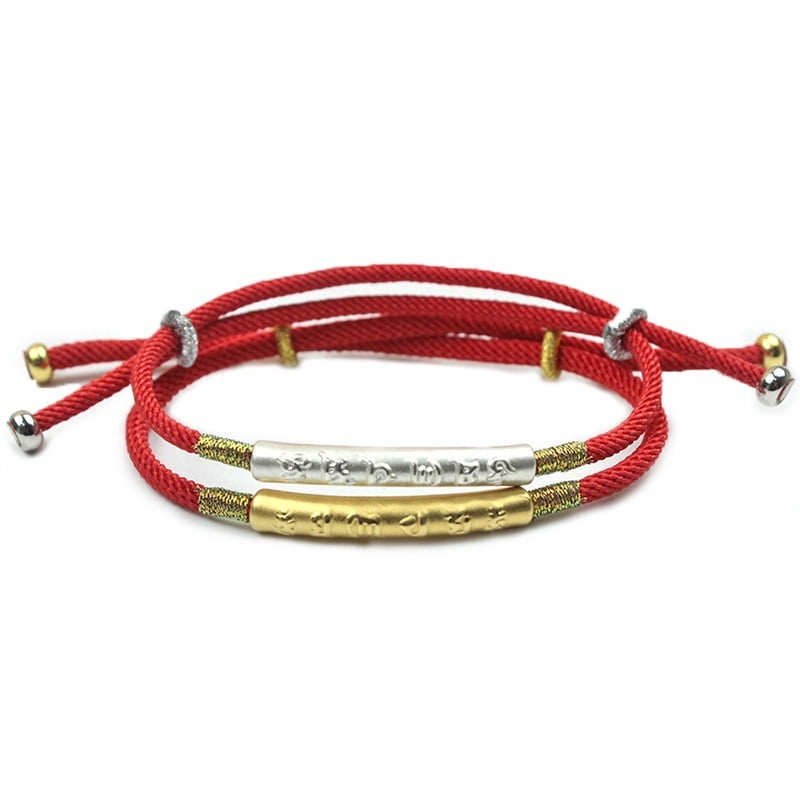Red string bracelets are a fascinating cultural phenomenon found in various traditions around the globe. Often imbued with symbolic meaning, these bracelets serve not only as fashion accessories but also as powerful talismans believed to offer protection, good luck, and spiritual connection. In this article, we will explore some of the most popular styles of red string bracelets from different cultures and their significance.
1. Kabbalah Red String Bracelet
1.1. Origin and Meaning
In Jewish mysticism, particularly Kabbalah, the red string bracelet is worn to ward off the “evil eye” and negative energy. It is typically made from thin red wool and is tied around the wrist while reciting a specific blessing or prayer.
1.2. Rituals and Practices
The bracelet is often tied by a loved one, symbolizing connection and support. Many believe that the red string should be worn until it naturally falls off, signifying the completion of its protective purpose.
2. Buddhist Red String Bracelet
2.1. Spiritual Significance
In Buddhism, red string bracelets are often used as protective charms. They are believed to bring good fortune and spiritual strength to the wearer. These bracelets can be made from various materials, including silk or cotton, and are sometimes adorned with beads or charms featuring Buddhist symbols.
2.2. Blessings and Rituals
Buddhist monks may bless these bracelets during rituals, enhancing their spiritual significance. Wearing a blessed red string bracelet serves as a reminder of one’s spiritual journey and commitment to the teachings of Buddhism.
3. Hindu Red Thread (Kalava)
3.1. Cultural Importance
In Hindu tradition, the red thread, known as “Kalava” or “Moli,” is often tied around the wrist during religious ceremonies. It symbolizes the bond between the individual and the divine, representing protection, purity, and auspiciousness.
3.2. Ritualistic Ties
The red thread is typically tied by a priest during rituals, and its presence is believed to invite blessings and safeguard the wearer from harm. It is common to see this thread worn during significant life events, such as weddings or religious festivals.
4. Chinese Feng Shui Red String Bracelet
4.1. Feng Shui Beliefs
In Chinese culture, red is considered a color of luck and prosperity. Red string bracelets are often associated with Feng Shui practices, believed to attract positive energy and ward off negativity.
4.2. Personalization and Symbols
These bracelets may feature charms or symbols like the Chinese zodiac, coins, or other items considered auspicious. Many people wear them to enhance their fortune, particularly during the Lunar New Year.
5. Fashion and Modern Interpretations
5.1. Trendy Accessories
In recent years, red string bracelets have gained popularity as trendy fashion statements. Many brands create stylish versions using various materials, such as leather or metal, often incorporating modern designs alongside traditional elements.
5.2. Customization and Personal Meaning
Contemporary red string bracelets often allow for personalization, including the addition of initials, gemstones, or charms. This customization makes them popular among younger generations, who seek to express their individuality while embracing cultural significance.
6. Conclusion
Red string bracelets are rich in cultural symbolism and significance, transcending geographical boundaries. Whether worn for spiritual protection, good fortune, or as a fashionable accessory, these bracelets embody connections to tradition and belief systems. By understanding the various styles and meanings associated with red string bracelets around the world, we can appreciate their enduring appeal and the cultural heritage they represent.




